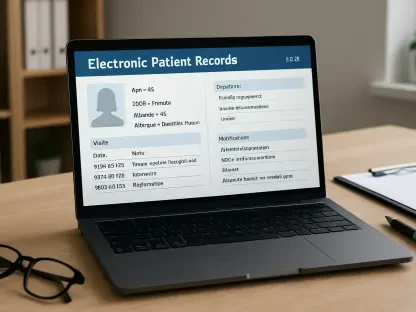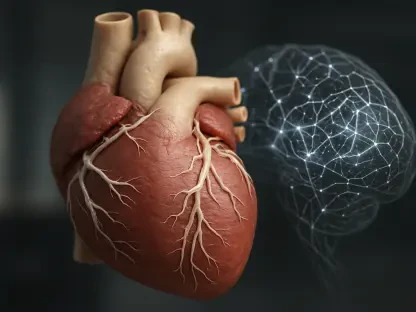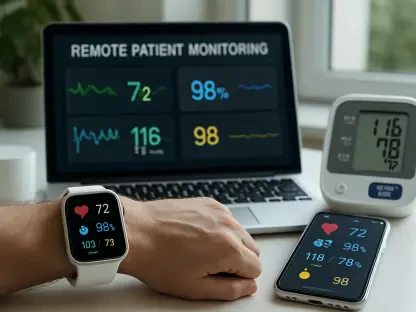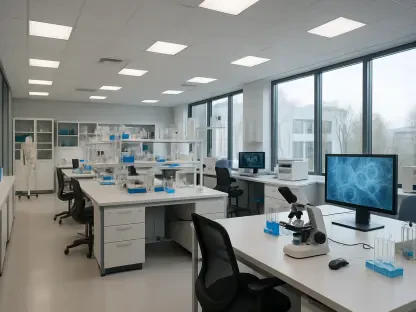In the intricate ecosystem of healthcare, where every detail can impact patient recovery, hospital foodservice often remains an underappreciated yet vital component of the patient experience. Meals are far more than mere sustenance; they represent a fleeting opportunity for patients to assert some control and find comfort in an environment that frequently strips away autonomy. Beyond providing essential nutrition, food delivery acts as a bridge for human connection, offering moments of dignity through interactions with dedicated staff. However, this critical function faces significant obstacles due to outdated and fragmented technological systems. These disconnected platforms create a cascade of inefficiencies and risks that undermine not only operational workflows but also the very essence of patient-centered care. The pressing question is whether these systemic shortcomings are silently eroding the quality of hospital foodservice, with far-reaching implications for safety, staff morale, and financial stability.
The Hidden Costs of Fragmented Technology
Operational Breakdowns and Patient Risks
The challenges posed by disconnected systems in hospital foodservice are stark and pervasive, touching every facet of operations from menu planning to tray delivery. Fragmented platforms for managing dietary needs, inventory, and tracking often force staff to rely on manual processes and excessive communication, such as phone calls, to bridge gaps. This inefficiency is particularly acute given that over 60% of hospitals grapple with staffing shortages, amplifying the strain on already limited resources. More critically, the lack of integration with electronic health records (EHRs) frequently leads to dangerous errors in meal delivery. Research indicates an alarming 8% error rate in hospital meals, with the vast majority classified as critical, posing immediate threats to patient safety. Such mistakes, often involving mismatched dietary restrictions or allergies, highlight how technological fragmentation directly jeopardizes health outcomes, turning a potential source of comfort into a significant risk.
The ripple effects of these operational breakdowns extend beyond mere inconvenience, striking at the heart of patient well-being. Malnutrition, a condition affecting roughly one-third of hospitalized patients, is often exacerbated by inconsistent or incorrect meal delivery stemming from poor system interoperability. This issue correlates with longer hospital stays and heightened readmission rates, placing additional burdens on both patients and healthcare facilities. The absence of seamless data sharing means that critical dietary updates may not reach foodservice teams in time, resulting in meals that fail to meet medical needs. Furthermore, the time staff spend troubleshooting these technical failures detracts from direct patient care, creating a vicious cycle of inefficiency. This systemic flaw not only undermines the nutritional support patients require for recovery but also erodes trust in the hospital’s ability to provide holistic care.
Human and Financial Toll
Beyond the immediate risks to patients, disconnected systems exact a heavy toll on hospital staff, contributing to widespread burnout and dissatisfaction. Nearly 40% of healthcare workers point to inefficient systems as a primary source of frustration, a statistic that reflects the daily grind of navigating manual workarounds and outdated data. This persistent stress not only impacts morale but also hinders retention, as overburdened employees struggle to balance administrative burdens with meaningful patient interactions. The emotional weight of knowing that system failures could harm vulnerable patients further compounds this strain, creating an environment where staff feel unsupported by the very tools meant to assist them. As a result, hospitals face a growing challenge in maintaining a stable workforce, which in turn affects the consistency and quality of care delivery across departments.
Financially, the impact of fragmented technology is equally daunting, as inefficiencies translate into tangible losses that strain tight budgets. Food waste, which accounts for 10–15% of total hospital waste, often results from poor inventory management and the inability to align supply with demand due to disconnected systems. This not only represents a direct cost but also missed opportunities to optimize resources in an era of rising operational expenses. Additionally, the downstream effects of patient harm—such as extended stays or readmissions due to malnutrition or meal errors—add further economic pressure. Hospitals find themselves caught in a cycle where technological shortcomings drain both human capital and financial reserves, diverting funds from critical areas like staff training or facility upgrades. Addressing these hidden costs demands a reevaluation of how foodservice technology is prioritized within the broader healthcare framework.
The Case for Integrated Solutions
Streamlining Operations and Safety
Integrated foodservice systems, when seamlessly connected to EHRs and other hospital platforms, present a transformative solution to the chaos of disconnected technology. By enabling real-time updates for dietary orders and allergy alerts, these systems significantly reduce the likelihood of critical meal errors, ensuring that patients receive safe and appropriate nutrition. Faster meal delivery becomes a reality as manual processes are replaced with automated data flows, allowing staff to respond promptly to changing patient needs. Moreover, integration enhances inventory and procurement processes by providing accurate, up-to-date information, which minimizes shortages and prevents inappropriate substitutions that could compromise nutritional quality. The outcome is a more reliable foodservice operation that not only prioritizes patient safety but also aligns closely with clinical objectives, reinforcing the role of nutrition in recovery.
The operational benefits of integrated systems extend to creating a more cohesive and efficient hospital environment, particularly in diverse settings. Whether in rural clinics or sprawling urban medical centers, standardized platforms ensure consistency in foodservice delivery, eliminating disparities that often arise from fragmented technology. This uniformity is critical for maintaining high standards of care across multiple sites, where varying levels of technological adoption can lead to uneven patient experiences. Additionally, the reduction in manual tasks frees up staff to focus on higher-value activities, such as patient engagement, rather than wrestling with outdated systems. Hospitals that have adopted such integrated approaches report smoother workflows and a marked decrease in operational friction, demonstrating that technology, when properly aligned, can act as a force multiplier for efficiency and safety in foodservice operations.
Supporting Staff and Cutting Costs
For hospital staff, the adoption of integrated systems offers a much-needed reprieve from the administrative burdens imposed by disconnected platforms. By automating routine tasks like data entry and order verification, these systems allow employees to dedicate more time to direct patient care, fostering a sense of purpose and reducing workplace stress. Hospitals utilizing shared dashboards and unified data sources have noted improvements in staff satisfaction and retention, as workers feel empowered by tools that actually support their efforts. This shift not only enhances morale but also mitigates the risk of burnout, a pervasive issue in healthcare settings where human resources are stretched thin. Ultimately, supporting staff through better technology translates into more consistent and compassionate care for patients, creating a positive feedback loop within the hospital ecosystem.
From a financial perspective, integrated systems deliver substantial cost savings by tackling inefficiencies at their root. Standardized platforms help curb overproduction and align supply with actual demand, directly reducing the significant issue of food waste that plagues many hospitals. This optimization of resources is particularly vital in an environment where every dollar counts, allowing facilities to redirect savings toward critical areas like patient services or infrastructure improvements. Furthermore, the reduction in meal errors and associated patient complications—such as extended stays or readmissions—lowers indirect costs that often go unaccounted for in budget planning. The evidence from facilities that have embraced integration shows a clear path to fiscal responsibility, proving that investing in connected technology is not just a matter of operational convenience but a strategic imperative for long-term financial health.
Reimagining Foodservice as Core to Healthcare
A Shift in Perspective
Hospital leaders must fundamentally rethink the role of foodservice, moving away from viewing it as a mere logistical function and recognizing it as a cornerstone of patient-centered care. Food is not just fuel; it’s a source of comfort and dignity for patients navigating the challenges of illness, making its delivery a critical touchpoint in the healthcare experience. Digital transformation in this context isn’t about layering on more complex technology but about ensuring that existing systems communicate effectively to support this mission. Establishing a single, real-time data source for dietary and operational needs can empower foodservice teams to operate with unprecedented clarity and speed. Such an approach not only enhances patient safety by minimizing errors but also reinforces the emotional and psychological value of meals, ensuring that every interaction contributes positively to the healing process.
This shift in perspective also requires acknowledging the broader impact of foodservice on clinical outcomes and hospital reputation. When meals are consistently accurate and timely, patient satisfaction improves, which is increasingly tied to performance metrics in value-based care models. Integrated systems play a pivotal role here by bridging the gap between clinical data and operational execution, ensuring that dietary interventions align with medical plans. This alignment can reduce complications like malnutrition, which directly influence recovery timelines and readmission risks. By prioritizing foodservice as an integral part of healthcare delivery, administrators can transform a historically overlooked department into a powerful asset for enhancing overall care quality. The time has come to elevate foodservice from the margins to the forefront of strategic planning, recognizing its potential to drive both human and operational excellence.
Building Collaboration for Change
Achieving a reimagined vision for hospital foodservice hinges on robust collaboration across diverse departments, including IT, compliance, and food and nutrition services. These teams must work in tandem to break down silos and establish integrated systems that prioritize patient needs over bureaucratic inertia. By treating foodservice as a clinical imperative rather than a secondary concern, hospitals can align operational workflows with broader care goals, ensuring that every meal supports recovery and well-being. This collaborative approach also fosters innovation, as cross-functional teams can identify and address pain points that isolated departments might overlook. The result is a more agile and responsive foodservice operation that adapts to the dynamic demands of healthcare environments with precision and empathy.
Moreover, connected systems do more than solve technical challenges; they strengthen the human bonds that define hospital culture. When foodservice staff have access to accurate, real-time data, they can engage with patients more meaningfully, turning routine interactions into opportunities for connection and trust. This human-centric focus is amplified by technology that reduces errors and stress, allowing staff to bring compassion to the forefront of their work. Hospitals that have embraced such collaborative models report not only improved efficiency but also a renewed sense of purpose among employees, as they see the direct impact of their efforts on patient dignity. By investing in this collective effort, healthcare facilities can redefine foodservice as a vital conduit for both operational success and compassionate care, setting a new standard for what it means to heal through every aspect of the patient experience.









